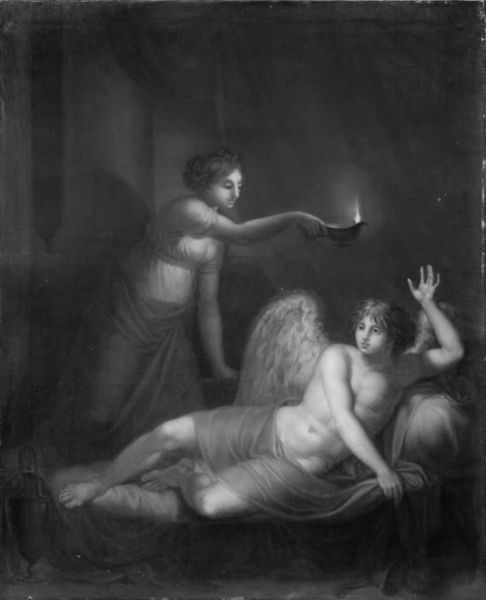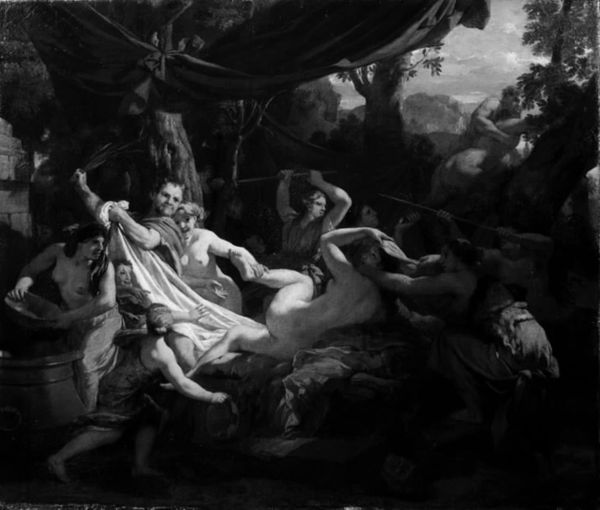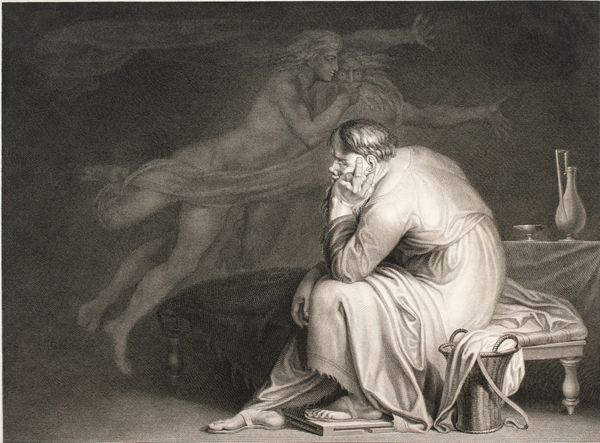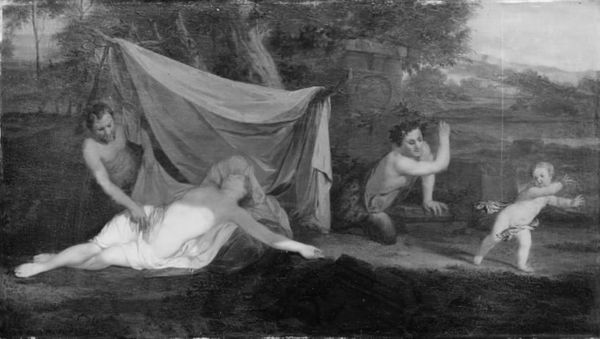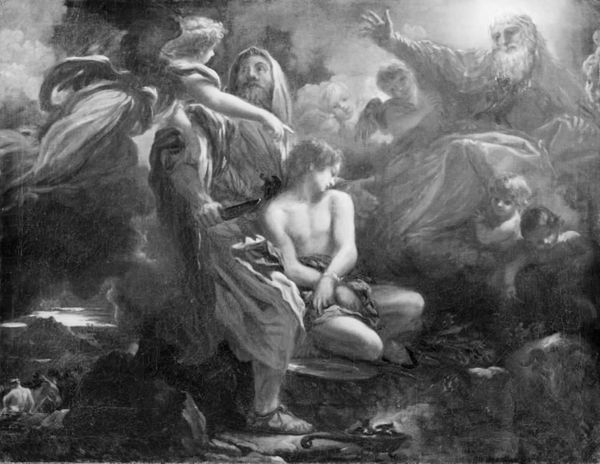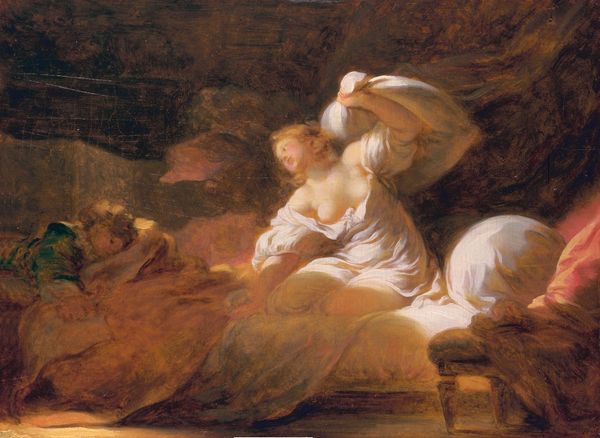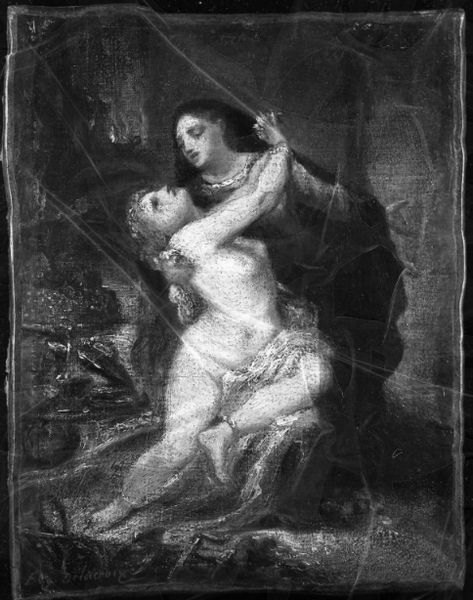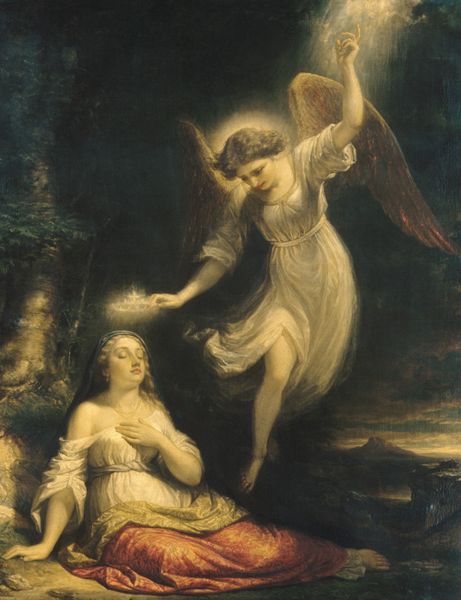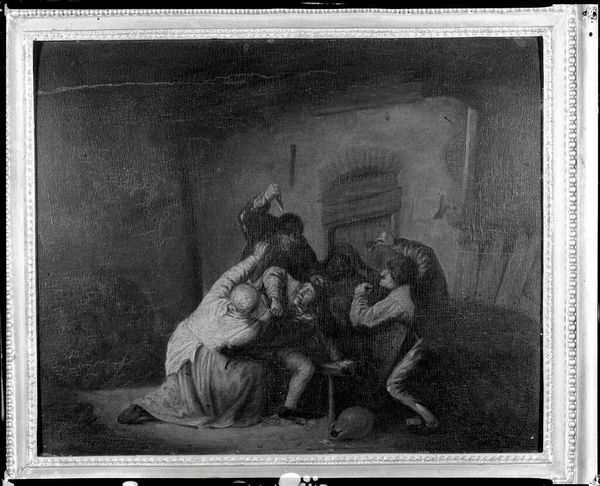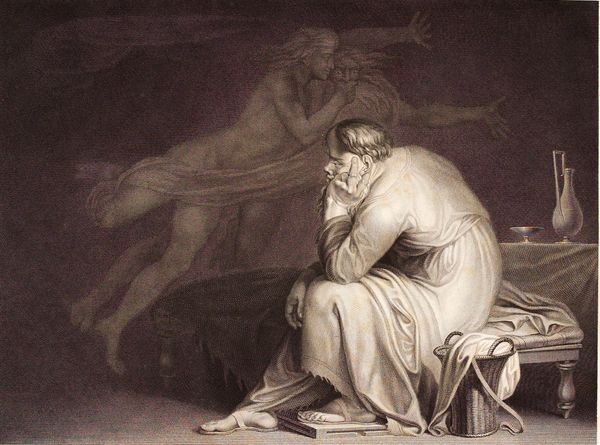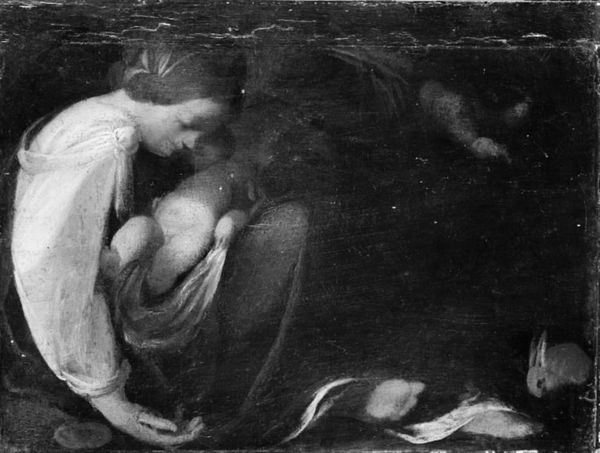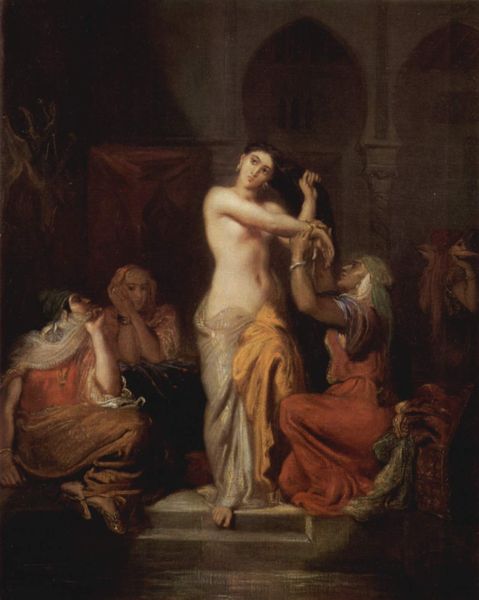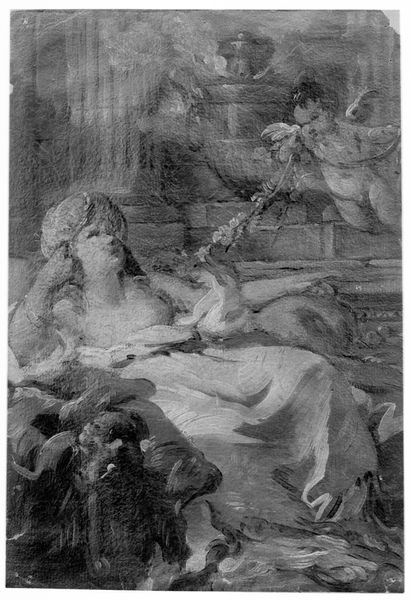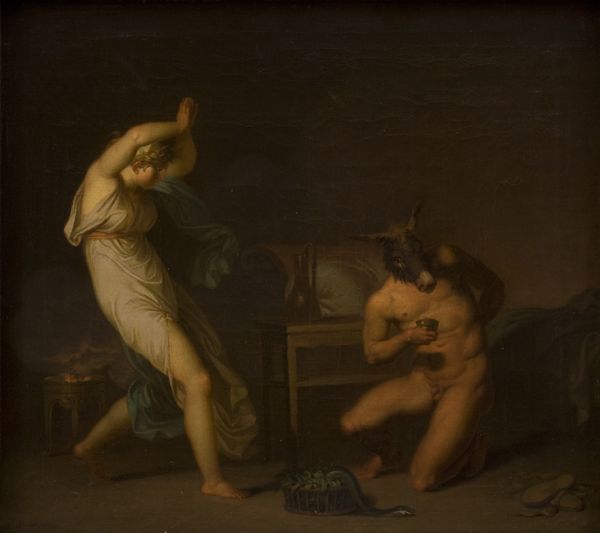
painting, canvas
#
neoclacissism
#
narrative-art
#
painting
#
figuration
#
canvas
#
black and white
#
monochrome photography
#
history-painting
#
academic-art
#
monochrome
#
monochrome
Dimensions: 47.7 cm (height) x 48.2 cm (width) (Netto)
Curator: This painting, dating from 1803 to 1809, is entitled "Julia and Fulvia." Editor: It’s immediately striking—almost operatic in its drama, heightened by the monochromatic palette. The stark light and shadow create an intense atmosphere. Curator: Precisely. The artist, anonymous to this day, employed academic painting techniques that align strongly with the neoclassical art movement; it's quite an exquisite, albeit subdued, representation of that era’s style. Editor: Yes, but I wonder what narrative is unfolding? There's an element of the gothic novel in its tenebrism, setting a sinister, somewhat unsettling, tone. Curator: That’s an interesting point. Historians see it reflecting anxieties surrounding female virtue and societal power. Julia, daughter of Emperor Augustus, and Fulvia, wife to Mark Anthony, were well known figures in history, their narratives colored by their powerful male connections. This piece portrays them in a moment of high, although undefined, drama. Editor: So, are they the focal points then, these two women in what seems a flight from some lurking danger? The light, and implied danger, draws our attention to their bodies and faces as well as their implied emotions. Curator: Correct. Note the formal, almost sculpted, quality in the rendering of their drapery, the figures themselves. Each shape appears carefully measured. It invites viewers to study, and possibly emulate, virtue. Editor: But their expressions, are they more of caution or terror? How can the image work in line with ideas on gender that were more radical? How do these depictions work for the viewer who considers ideas around contemporary representations? The reception of these paintings certainly differs. Curator: Indeed. The enduring mystery behind its creation—the absence of a known author—adds another layer to the analysis, shifting reception further. Editor: Yes, seeing these historical figures through this monochrome lens makes us reconsider the public image, its intention, and its evolution. Curator: The work certainly demands scrutiny across visual and cultural dimensions. Editor: Indeed, an encounter to contemplate in SMK.
Comments
No comments
Be the first to comment and join the conversation on the ultimate creative platform.
